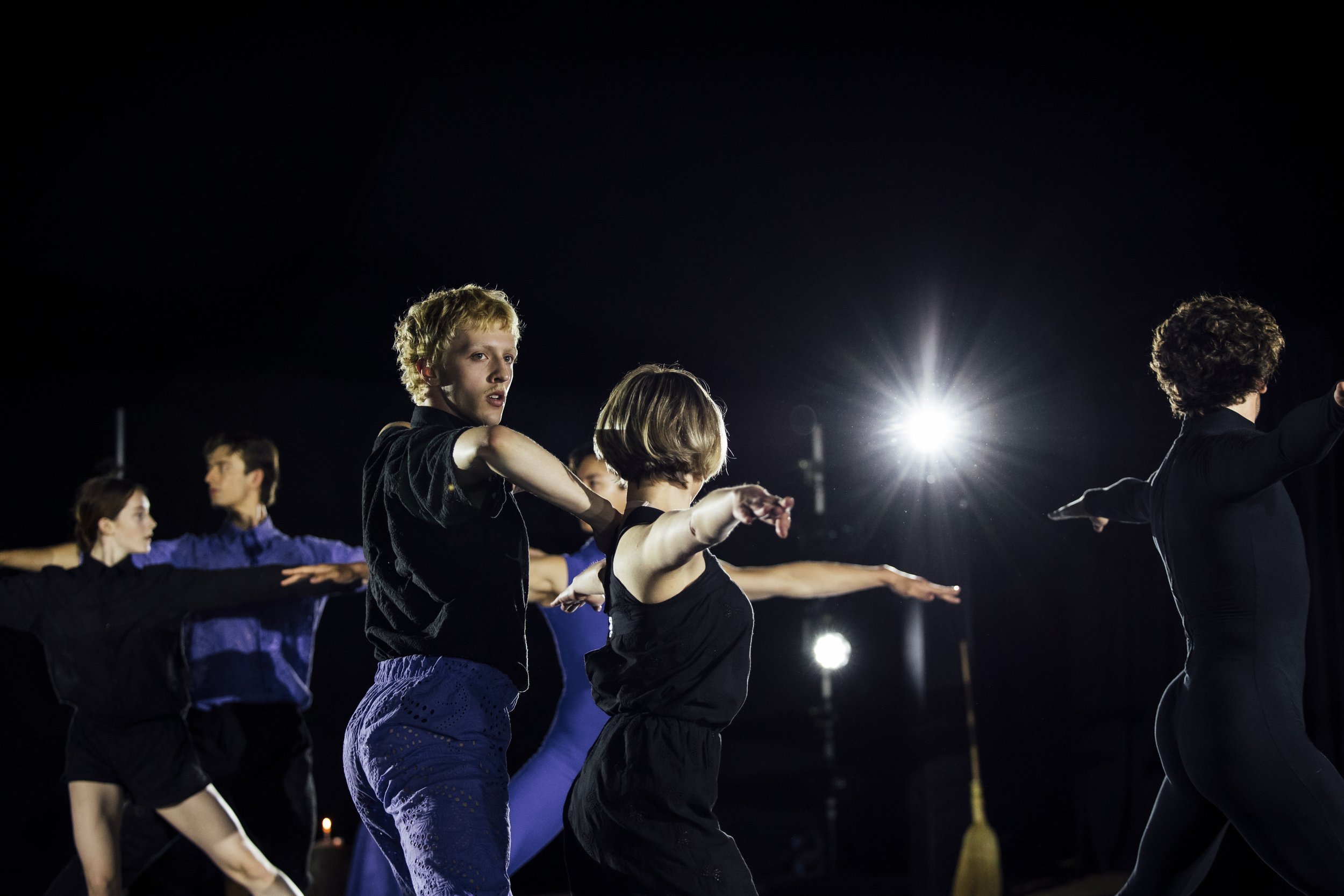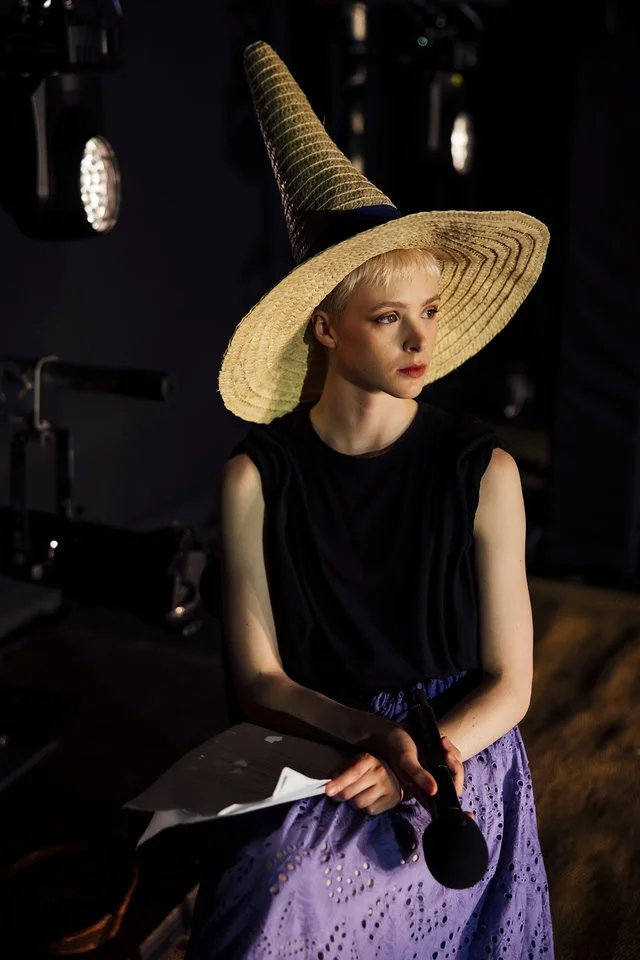Weaving
A choreographic offering
to the Witches of Jersey
Dear children of the Witches of Jersey,
Onè, Respè! Honor and Respect to you. This is a dance-offering for the women that where brutally persecuted and murdered in the island of Jersey and their descendants. And as genocide is the matter at hand, I cannot not mention Palestine, and offer this dance for its Freedom.
My coming to Jersey, infamously known as Europe’s witch-hunting capital, is a moment to ask again: Why where our ancestras systematically persecuted and murdered? Carolyn Merchant’s The Death of Nature and Silvia Federicci’s Caliban and the Witch explain how these 200 years of systematic murder were fundamental and foundational for Modernity and Capitalism. The transition from artisans to factory workers, from sheep herders to enslaved labor. This choreography dives into the depth of ancestral work; sacred geometry; the sensuality of rigour. It taps into the energy and sophistication of craft, witchcraft. Harri, Anna, Stan, Doni, Ombline, Roman, Hannia, and Tabi, each dancer a thread of hope, a vessel for the Divine, embodying the mathematics of weaving, the warps and wefts of a communal meditation, the slow geometry of bodies in loom, a telluric re-membering of emerging textures.
And so, in weaving and dancing, we take root in this sacred island, we conjure the vital force of ancestors and we cast our spell for freedom of humans and Earth:
From spider web, to root networks. From the river to the sea. From the abyssal plane to the rainbow. From the sun set to the sun rise. From the low tide to the high tide. From the thunder roar to the singing crickets… Earth will be Free.
With love and magic,
Ceci
Conjuring and Choregraphy Cecilia Lisa Eliceche
Secretariat Leandro Nerefuh
with the assistance of Toya
Costumes Renato Carneiro and Telma from Katuka Africanidades
Assistant Jossia Clément
Thank you to Toya, Gilsamara Moura, Friedericke and Leonel (Goethe Institut Salvador), Cristian Waman, Maite Eliceche, Saga and Lara.

Weaving begins with a ritual to cleanse the performance space—a steroetypical witch figure anointing the stage with Cachaça and lighting a candle, and the dancers ceremonially cutting ties with the past using scissors. This act echoes centuries-old cord‑cutting traditions: scissors symbolically sever attachments, releasing old energies and preparing for transformation.
As dancers weave increasingly intricate patterns, building mounting tension and collective remembrance, the Witch reads out the list of witch trails from the archives of Jersey, theirs names and sentences repeated in a haunting mantra.
Each movement stitches these voices into a living tapestry—thread by thread, person by person—until the ritual culminates in a powerful moment of release: the lone, witch‑like figure sweeps the space clean, embodying both purgation and renewal.
Rooted in Cecilia’s Vodou lineage and campesina heritage, Weaving links Jersey’s witch trials to global narratives of oppression and resilience. This piece is not only a memorial—it is an invocation of justice, a spell for liberation, and ultimately, a gesture of healing.


